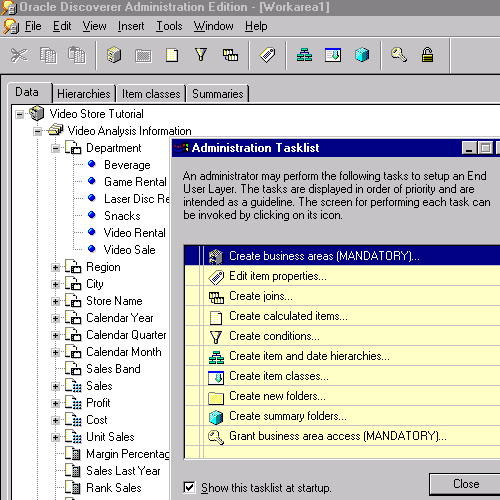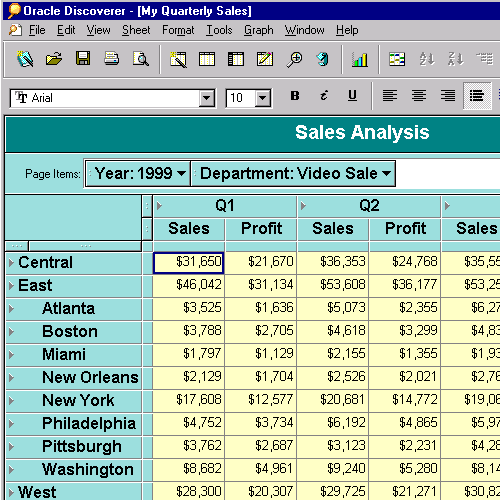
|
||||
|
As a Discoverer Business Intelligence system manager, you use Oracle9i Discoverer Administrator to design and present a business user oriented view of data from data warehouses, data marts, clickstream data, and online transaction processing systems for business professionals to access using Discoverer Plus (included with Oracle9iAS). Discoverer Administrator enables you to build and maintain the End User Layer (EUL), which determines how users access and view data. Based on the specific needs of your users, you define business areas in the EUL by grouping related information from database tables, views or by using simple SQL or more complex statements with set operators. In essence, a business area presents users with a cohesive set of folders and items that support a common business purpose in familiar terminology. You can simplify query building and analysis for your Discoverer Plus users with Discoverer Administrator's advanced wizard interfaces. For example, to enable Discoverer Plus users to analyze data from more than one folder, you link the folders in the business area by defining a 'join'. To enable users to execute queries and view results with conditions and calculations quickly and easily, you create predefined conditions and calculated items in the EUL that users are most likely to need. When users create worksheets in Discoverer Plus, they simply select the filters and calculations that apply. To improve query performance, Discoverer Administrator enables you to create summary folders of pre-aggregated data that users will want to analyze and use in reports. The pre-aggregated data is stored in summary tables or materialized views. Discoverer knows to redirect the query to the summary data instead of aggregating large volumes of detail data on-the-fly. To ensure that summary folders contain current, relevant data when users require them, you can schedule periodic automatic refreshes of the summaries in Discoverer Administrator. To further reduce the amount of time spent on administration, you can use the Automated Summary Management feature to create and maintain the best set of summaries based on user query statistics and the summary policy you define. |
|
|||

